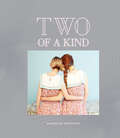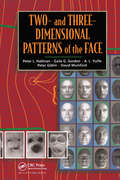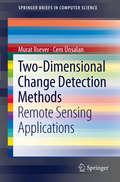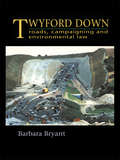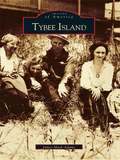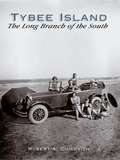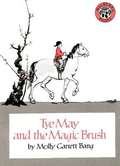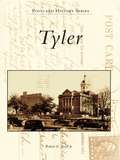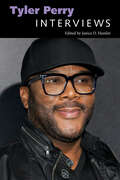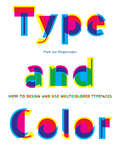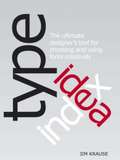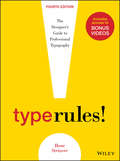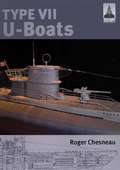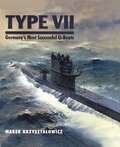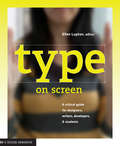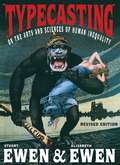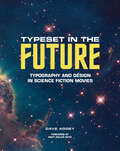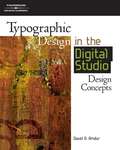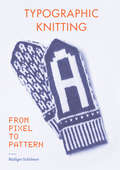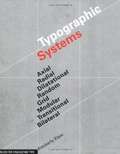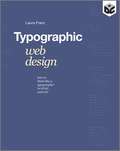- Table View
- List View
Two of a Kind
by Sandrine KerfanteTwo of a Kind gathers images from photographers around the world in a striking celebration of visual symmetry. Twins, reflections, doubles, duplicates, and pairings are brought together in these dreamy images compiled by French photo curator and blogger Sandrine Kerfante. Fashion-forward, smart, and beautiful, this is the perfect gift for girlfriends with great taste who feel as close as sisters, actual sisters who feel as close as twins, and actual twins who will see their duality reflected in all kinds of intriguing new ways. A survey of 21st-century photography and an exploration of shared identity, this atmospheric collection, with metallic-tone and debossed cover, will transport its viewers, awakening the imagination and capturing the heart.
Two- and Three-Dimensional Patterns of the Face
by Peter W. Hallinan Gaile Gordon A. L. Yuille Peter Giblin David MumfordThe human face is perhaps the most familiar and easily recognized object in the world, yet both its three-dimensional shape and its two-dimensional images are complex and hard to characterize. This book develops the vocabulary of ridges and parabolic curves, of illumination eigenfaces and elastic warpings for describing the perceptually salient fea
Two-Dimensional Change Detection Methods
by Cem Ünsalan Murat IlseverChange detection using remotely sensed images has many applications, such as urban monitoring, land-cover change analysis, and disaster management. This work investigates two-dimensional change detection methods. The existing methods in the literature are grouped into four categories: pixel-based, transformation-based, texture analysis-based, and structure-based. In addition to testing existing methods, four new change detection methods are introduced: fuzzy logic-based, shadow detection-based, local feature-based, and bipartite graph matching-based. The latter two methods form the basis for a structural analysis of change detection. Three thresholding algorithms are compared, and their effects on the performance of change detection methods are measured. These tests on existing and novel change detection methods make use of a total of 35 panchromatic and multi-spectral Ikonos image sets. Quantitative test results and their interpretations are provided.
Twyford Down: Roads, campaigning and environmental law
by Barbara BryantThe Twyford Down story is set in a political and historical framework in order to examine the key issues affecting road planning and environmental protection: the system of route selection; Crown development; government agents, NGOs and locally elected authorities; conservation legislation; subsidiarity; lobbying techniques; and the role of the press. Written in a lively style and vividly illustrated, Twyford Down will appeal to environmental advisors, policy makers and planners as well as lobbyists and those interested in the environment.
Tybee Island (Images of America)
by James Mack AdamsTybee Island is a tiny piece of land, only-two-and-a-half miles long and two-thirds of a mile wide; however, its strategic location near the mouth of the Savannah River assigned to it an important role in the birth and history of the state of Georgia. Over this coastal community five flags have flown, representing Spain, France, England, the ConfederateStates of America, and the United States of America.Using numerous vintage photographs from the archives of the Tybee Island Historical Society, Tybee Island guides the reader through over two hundred years of history. Although much of its history is linked to nearby Savannah, Tybee is singular among Georgia's coastal islands, and has a history and lore that is uniquely its own. This visual journey begins with the building of Georgia's oldest and tallest lighthouse, and continues through Tybee's involvement in the Civil War. Also covered are the island's later roles as a military installation, apopular coastal resort, and a residential community. Vintage photographs recall earlier days on Tybee, when the island was known as "Ocean City," "Savannah Beach," and, to some, "the best kept secret on the East Coast."
Tybee Island: The Long Branch of the South
by Robert A. CiucevichFrom Guale Indians and Spanish explorers to its glory days as the queen of south Atlantic beach resorts and beyond, Tybee Island's quiet charm hides a rich and occasionally violent history. Soldiers, rebels, and rumrunners all found their place in history here as great battles, fires, and hurricanes played out over time. Through centuries of change, Tybee has remained one of the South's most popular resorts.
Tye May and the Magic Brush
by Molly Garrett BangIn a dream a poor orphan is given a brush that brings to life everything she paints.
Tyler
by Robert ReedIn the early 1900s, the golden age of postcards was just beginning. Millions of cards were mailed across America, and many survive today in archives and private collections. Through these snapshots of history, Tyler's evolution can be traced. While fruit and cotton production was king into the early 20th century, a floral beauty soon brought Tyler new royalty-the Rose Queen. The discovery of oil in the city's backyard supplied a security blanket during the Great Depression's uncertain days, and Tyler benefitted with commercial and population growth. This book contains more than 200 vintage postcards that chronicle Tyler's social, educational, and medical history and its place in the heart of East Texas.
Tyler Perry: Interviews (Conversations with Filmmakers Series)
by Janice D. HamletA career-spanning volume, Tyler Perry: Interviews collects sixteen interviews, ranging from the early 2000s to 2018. Once a destitute and struggling playwright, Tyler Perry (b. 1969) is now a multimedia phenomenon and one of the most lucrative auteurs in Hollywood. Known for his unwavering and audacious rhetorical style, Perry has produced an impressive body of work by rejecting Hollywood’s procedures and following his personal template. Featuring mostly African American actors and centering primarily on women, Perry’s films lace drama and comedy with Christianity. Despite the skepticism of Hollywood executives who claimed that church-going black people do not go to the movies, Perry achieved critical success with the release of his first film, Diary of a Mad Black Woman, which became the US’s highest-grossing movie of 2005. With his movies, Perry has discovered an untapped audience for the stories he has to offer—stories about adversity, faith, family, and redemption. Critics, including African American filmmaker Spike Lee, have censured Perry’s work for being repetitive and reinforcing negative stereotypes that have long plagued the African American community. Supporters, however, praise Perry for creating films that allow his audience to see themselves onscreen. Regardless of how his films are received, Perry’s accomplishments—establishing the Tyler Perry brand, building one of the largest movie studios in the country, employing more African Americans in front of and behind the camera than any other studio, and creating cinematic content for audiences other filmmakers have ignored—undeniably establish him as one of the most powerful multimedia moguls in the country.
Type & Color: How to Design and Use Multicolored Typefaces
by Mark van WageningenTo create his award-winning multicolored typefaces, Mark van Wageningen first returned to the past for his research: wood-type printing. His subsequent form and color studies led to a series of popular digital typefaces and awards for typographic excellence from the Type Directors Club. In Type & Color, the pioneering typographic designer provides all the tools you will need to participate in the hottest typography trend: designing with multicolored fonts. This manual, aimed at a broad spectrum of graphic design professionals, offers analyses of chromatic type specimens, instructions for multilayer type design, and applications across a range of print and digital media. From display fonts to running text, discover how color can give words expressive new possibilities.
Type Idea Index: The Designer's Ultimate Tool for Choosing and Using Fonts Creatively
by Jim KrauseType Idea Index is a tool - an idea-generating, horizon-expanding, knowledge-broadening power-tool that can be used to boost the creative output of designers, illustrators and anyone else who uses type. The basic principle behind Type Idea Index is simple: ideas breed ideas. If you are looking for new ways of employing type in your works of art and design (or new twists to apply to your current typographic techniques), check out Type Idea Index. You'll find yourself face-to-face with 650+ custom-created, idea-sparking examples of typography and type-intensive design. For maximum user-friendliness, these samples are organized according to the theme they express (Energy, Elegance, Order, Rebellion) and the sort of real-world application they relate to (initials, monograms, logos, headlines, paragraphs). Expand your knowledge of type and brainstorm for ideas every time you design with letters and words. Type Idea Index is the sixth installment in the best-selling, globally popular Index series by Jim Krause.
Type Rules!
by Ilene StrizverFrom principle to practice, get it all in the revised edition of the comprehensive introduction to typography. Type Rules: The Designer's Guide to Professional Typography, 3rd Edition is an up-to-date, thorough introduction to the principles and practices of typography. From the fundamentals to cutting-edge applications, this edition has everything today's serious designer needs to use type effectively. Dozens of exercises reinforce authoritative coverage on such topics as how to select the appropriate type for the job, how to set type like a pro, how to avoid common mistakes, and how to design a typeface, as well as how to fully harness the power of major design packages such as InDesign? and QuarkXPress? -- with new coverage of their latest versions. This edition includes: New information on OpenType, font management utilities, font web sites, and interactive typography. An expanded?history of type and an updated glossary of key terms. Exercises throughout to help reinforce the concepts presented in the book. A wealth of tried-and-true as well as recently developed type tips. More in-depth type issues, including scaling logos. "I've purchased and read just about every book on typography written over the last twenty-five years. Ilene Strizver's Type Rules is one of the best. It's a book that will prove its value time and again. " -- Allan Haley, Director of Words and Letters, Monotype Imaging "Type Rules is a must-have book for students and professionals alike. I highly recommend it. " -- Prof. Ed Benguiat, world-renowned type designer and educator, School of Visual Arts
Type Teams: The Principles Behind Perfect Type Face Combinations
by Tony SeddonEvery creative brief requires its own unique typographic solution to achieve both individuality and visual harmony. This is why the question "what's the best typeface combination?" is impossible to answer succinctly. Typefaces are a bit like people; their personalities can alter ever so slightly when you bring them together in different groups. A stern Geometric san serif can act the part of a plain disciplinarian when standing next to an equally restrained Transitional serif, but can become light-hearted and playful when it encounters a lively Casual script or a burly Slab serif face. Choosing typefaces that work well together is ultimately as subjective as it is scientific, as personal as it is informed, and as debated as it is agreed upon. The suggested type combinations illustrated throughout this book are designed to provide the information and inspiration you need to make the best choices you can when bringing typefaces together.A book for typographers, graphic designers, and font geeks alike.Type teams are compiled from a pool of two hundred handpicked typeface families.Typefaces from over fifty world-class type foundries and type designers.One hundred and forty nine type team combinations with up to four individual typeface families utilized for each.Thirty two themed sections to allow quick access to the required mood for your individual projects.Ten key principles to help you make the right typeface choices for your creative assignments.Fourteen "tricks" to apply when selecting and combining typefaces from your personal collection.
Type Teams: The Principles Behind Perfect Type Face Combinations
by Tony SeddonEvery creative brief requires its own unique typographic solution to achieve both individuality and visual harmony. This is why the question "what's the best typeface combination?" is impossible to answer succinctly. Typefaces are a bit like people; their personalities can alter ever so slightly when you bring them together in different groups. A stern Geometric san serif can act the part of a plain disciplinarian when standing next to an equally restrained Transitional serif, but can become light-hearted and playful when it encounters a lively Casual script or a burly Slab serif face. Choosing typefaces that work well together is ultimately as subjective as it is scientific, as personal as it is informed, and as debated as it is agreed upon. The suggested type combinations illustrated throughout this book are designed to provide the information and inspiration you need to make the best choices you can when bringing typefaces together.A book for typographers, graphic designers, and font geeks alike.Type teams are compiled from a pool of two hundred handpicked typeface families.Typefaces from over fifty world-class type foundries and type designers.One hundred and forty nine type team combinations with up to four individual typeface families utilized for each.Thirty two themed sections to allow quick access to the required mood for your individual projects.Ten key principles to help you make the right typeface choices for your creative assignments.Fourteen "tricks" to apply when selecting and combining typefaces from your personal collection.
Type VII U-Boats (Shipcraft Ser. #4)
by Roger ChesneauThe ShipCraft series provides in-depth information about building and modifying model kits of famous warship types. Lavishly illustrated, each book takes the modeller through a brief history of the subject class, highlighting differences between sister-ships and changes in their appearance over their careers. This includes paint schemes and camouflage, featuring colour profiles and highly-detailed line drawings and scale plans. The modelling section reviews the strengths and weaknesses of available kits, lists commercial accessory sets for super-detailing of the ships, and provides hints on modifying and improving the basic kit. This is followed by an extensive photographic gallery of selected high-quality models in a variety of scales, and the book concludes with a section on research references books, monographs, large-scale plans and websites.This volume is devoted to the largest class of submarines ever built, the Type VII, which formed the backbone of the German effort in the critical Battle of the Atlantic. A pre-war design, the Type VII was developed as the campaign progressed and was still in frontline service in 1945. All the major variants, as well as minor changes to equipment, are covered here. With its unparalleled level of visual information paint schemes, models, line drawings and photographs it is simply the best reference for any modelmaker setting out to build one of these famous boats.
Type VII: Germany's Most Successful U-Boats
by Marek Krzysztalowicz&“Describ[es] the Type VII and its place in the history of warfare . . . probably the finest book on German submarines of WWII available in print.&”—Firetrench First conceived in the mid–1930s, the Type VII was still in production in the closing stages of the Second World War a decade later. Subject to continuous improvement through six major variants and with around 650 completed, it was built in larger numbers than any other submarine design in history. It formed the backbone of the Kriegsmarine&’s campaign against merchant shipping for the whole of the war, and in terms of tonnage sunk was by far the most successful U-boat type. This encyclopedic work combines a technical description of the type in all its variations with a history of its development and an overview of its most significant operations—especially those convoy battles that were to have a crucial impact on the evolution of the design and its equipment. A particular attraction of the book is the comprehensive visual coverage—photographs of virtually every aspect of design, construction, fittings and shipboard life; highly detailed general arrangement plans and close-up scale drawings; and, with modelmakers in mind, a stunning collection of full-color three-dimensional illustrations of every external feature and variant of the boats. There have been many books on U-boats reflecting an enduring public interest so any new offering has to be special. With its unique concentration of information and illustrative reference, Type VII is unrivalled. &“A comprehensive history of the Kriegsmarine&’s most potent weapon . . . includes detailed modelmakers&’ plans together with over 320 photographs.&”—Maritime Advisor
Type on Screen: A Critical Guide for Designers, Writers, Developers, and Students (Design Briefs Ser.)
by Maryland Institute College of Art Ellen LuptonThe long awaited follow-up to our all-time bestseller Thinking with Type is here. Type on Screen is the definitive guide to using classic typographic concepts of form and structure to make dynamic compositions for screen-based applications. Covering a broad range of technologies—from electronic publications and websites to videos and mobile devices—this hands-on primer presents the latest information available to help designers make critical creative decisions, including how to choose typefaces for the screen, how to style beautiful, functional text and navigation, how to apply principles of animation to text, and how to generate new forms and experiences with code-based operations. Type on Screen is an essential design tool for anyone seeking clear and focused guidance about typography for the digital age.
Typecasting: On the Arts and Sciences of Human Inequality
by Stuart Ewen Elizabeth EwenTypecasting chronicles the emergence of the "science of first impression" and reveals how the work of its creators--early social scientists--continues to shape how we see the world and to inform our most fundamental and unconscious judgments of beauty, humanity, and degeneracy. In this groundbreaking exploration of the growth of stereotyping amidst the rise of modern society, authors Ewen & Ewen demonstrate "typecasting" as a persistent cultural practice. Drawing on fields as diverse as history, pop culture, racial science, and film, and including over one hundred images, many published here for the first time, the authors present a vivid portrait of stereotyping as it was forged by colonialism, industrialization, mass media, urban life, and the global economy.
Typeset in the Future: Typography and Design in Science Fiction Movies
by Dave AddeyA designer’s deep dive into seven science fiction films, filled with “gloriously esoteric nerdery [and] observations as witty as they are keen” (Wired).In Typeset in the Future, blogger and designer Dave Addey invites sci-fi movie fans on a journey through seven genre-defining classics, discovering how they create compelling visions of the future through typography and design. The book delves deep into 2001: A Space Odyssey, Star Trek: The Motion Picture, Alien, Blade Runner, Total Recall, WALL·E, and Moon, studying the design tricks and inspirations that make each film transcend mere celluloid and become a believable reality. These studies are illustrated by film stills, concept art, type specimens, and ephemera, plus original interviews with Mike Okuda (Star Trek), Paul Verhoeven (Total Recall), and Ralph Eggleston and Craig Foster (Pixar). Typeset in the Future is an obsessively geeky study of how classic sci-fi movies draw us in to their imagined worlds.
Typewriters: Iconic Machines from the Golden Age of Mechanical Writing
by Anthony Casillo“Typewriter expert and collector Anthony Casillo presents a visual homage to the device that revolutionized correspondence” (The Florida Times-Union).From the creation of the QWERTY keyboard to the world’s first portable typing machine, this handsome collection is a visual homage to the golden age of the typewriter. From the world’s first commercially successful typewriter—the Sholes & Glidden Type Writer of 1874—to the iconic electric models of the 1960s, eighty vintage devices are profiled in elegant photographs and fascinating text that highlights the design modifications, intricate details, and peculiar quirks that make each typewriter unique. From functional advances like noiseless machines to luxurious details such as mahogany covers and inlaid mother-of-pearl, a century of design innovation and experimentation is charted in these pages. Packed with visuals and rich with history, Typewriters is the essential story of a writing invention that changed the world.Includes a foreword by Tom HanksPraise for Typewriters“A Love Letter to Vintage Typewriters.” —Wall Street Journal“This is sure to delight typewriter lovers and those interested in machine or design history.” —Library Journal
Typographic Design in the Digital Studio: Design Concepts
by David A. AmdurThe craft of graphic design requires mastery of typographic design and of the digital applications used to execute it--these companion guides build capacities in both of these areas together. The Design Concepts book will guide readers to observe and reflect on how type functions and to develop strategies for creative typographic expression. The Application Skills Modules book pairs each lesson in typography with a lesson in the digital tools of design production. This book introduces the essential features of the Macintosh Operating System X (OSX) as well as Mac or PC versions of InDesign, Photoshop, Illustrator, and QuarkXPress, so readers can develop good working knowledge in one or all of these applications.
Typographic Knitting: From Pixel to Pattern
by Rudiger SchlomerLearn to knit a variety of typefaces modeled on digital designs by well-known type foundries including Emigre, Lineto, and Typotheque, and emblazon your hats, scarves, and sweaters with smartly designed monograms, letters, or words. Beginning with knitting basics, tips, and resources, and progressing through more advanced techniques, Typographic Knitting provides a systematic introduction on how to construct a variety of letter designs using different knitting techniques. This book bridges the gap between craft and design in a new way, and will delight typography connoisseurs, avid knitters, and makers looking for a novel medium.
Typographic Style Handbook: A Guide to Typography from Libanus Press
by Michael Mitchell Susan WightmanAn elegant handbook in typography, for the professional and amateur text designer.Typographic Style Handbook is an indispensable new manual for anyone working with text - books, journals, company reports, websites or marketing material - who wishes to develop an understanding of how to produce clean, clear and consistent typography.The handbook is divided into three sections: General typesetting covers the basic rules of setting text Books and journals explains the typographic styles used within the publishing industryCorporate style describes how the treatment of text can be integrated into an organisation's branding guidelines. Typographic rules and styles are copiously illustrated with examples and diagrams Alternative styles are listed and explained to enable users to develop their own 'house style' Includes a glossary and appendices to aid students and self-publishers Typographic Style Handbook is destined to become a classic manual alongside Judith Butcher's Copy-editing, Hart's Rules, The Economist Style Guide and the Oxford Dictionary for Writers and Editors.
Typographic Systems
by Kimberly ElamIn Typographic Systems, Kim Elam, author of our bestselling books, Geometry of Design and Grid Systems, explores eight major structural frameworks beyond the grid including random, radial, modular, and bilateral systems. By taking the reader through exercises, student work, and professional examples, Elam offers a broad range of design solutions.
Typographic Web Design: How To Think Like A Typographer In HTML and CSS
by Laura FranzLegibility and readability are the foundations for the typographic theories and practice covered in Typographic Web Design. You'll learn how to choose fonts, organize information, create a system of hierarchy, work with tabular information, create a grid, apply a typographic system across multiple pages, and build a font library. Each chapter provides time-tested typography rules to follow (modified for the web), explains why they work, when to break them, and offers the opportunity to test the rules with hands-on exercises in HTML and CSS. If you don't know HTML and CSS, Typographic Web Design provides a walk-through for each lesson, showing you how to plan and write syntax. Laura Franz is an Associate Professor of Design at University of Massachusetts Dartmouth, where she has taught web typography for 12 years. She has presented lectures and workshops on Typographic Web Design, and has written a course on the topic for Lynda. com.
